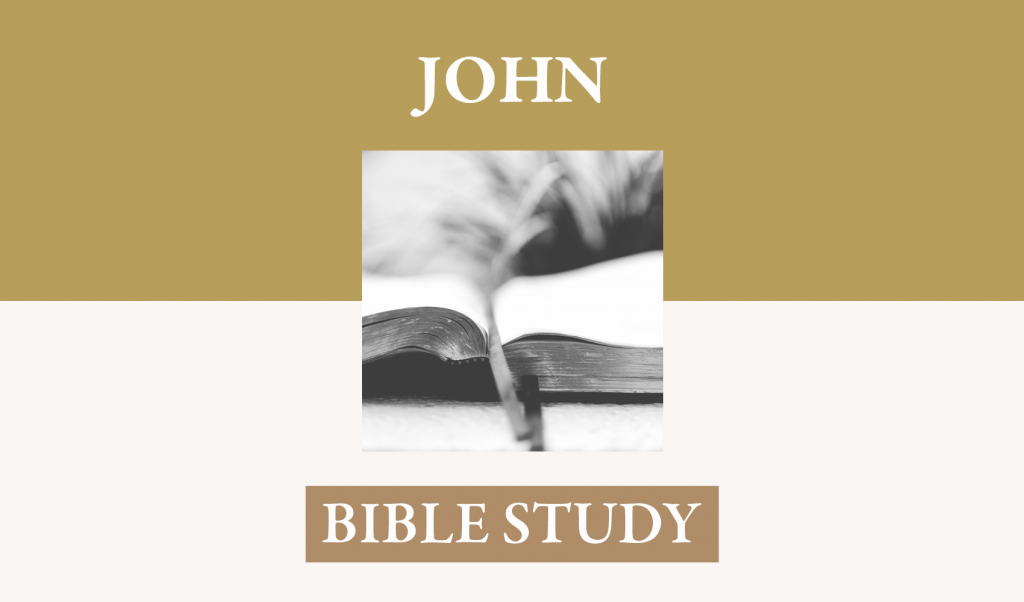John 19:23-30,38-42
Introduction: In this text we have come to the climax of the gospel. All has been driving toward this moment. Then in the denoument there is nothing ambiguous or unsatisfactory. All comes together in that the readers see that Christ’s finished work put an end to death, the consequences for sin as announced in Genesis 2:17. His true and living body gave proof through the eyes, ears, and hands of many astonished observers and in a variety of circumstances. Jesus predicted it, for this cause he was sent, to this death he went. He did more than shed his blood and suffer at the hands of cruel, wicked, unmerciful men; he felt his spirit crushed with omnipotent power, a part of his human nature unreachable by mortals and susceptible only to the just wrath of his Father. That being done at the hands of immutable justice, so his work was done through the humility of unquenchable mercy.
I. Verses 16-22 make it clear that Pilate was deeply concerned about all this “king” talk.
With the mention of “no king but Caesar,” he conceded to the ironic demands of the people expecting a Messiah.
A. (17) “bearing his own cross” -For the first part of the final journey of the mortal Jesus, he bore his own cross.
In demonstration that he did it in human weakness and as an abused and greatly distressed human, even the soldiers recognized that he could not complete the journey up the hill, for, as the other three gospels record, they conscripted Simon of Cyrene to complete carrying the instrument of death to the top of the hill, Golgotha.
B. (18) – In the manner of his execution there was no difference between Jesus and the common criminals executed by the same method on either side of him.
Charles Spurgeon has a sermon on the four words, “There they crucified Him,” emphasizing the significance of each word. We too should contemplate the power of these four words: “there” – the place of common execution among felons and rebels for the innocent Jesus; “They” – Roman soldiers carrying out their regular and common duties of execution on the uncommonly submissive victim of injustice at the hands of men; “crucified” – a brutal and inhumane aggravation of creaturely cruelty enacting the hours of divine justice prompted by eternal love and infinite mercy; “Him” – the victim of a sinister concatenation of earthly powers, the singularly glorious, omnipotent, overarchingly providential Son of God. “There they crucified Him.”
C. John emphasized the unintentional witness to the unearthly and eternal glory of Christ to the nations by pointing to the inscription written in three languages, Aramaic, Latin, and Greek, “Jesus of Nazareth, King of the Jews.”
When the Jews objected to this, Pilate rebuffed them with the curt but revealing words, “What I have written, I have written.” For what reason he insisted on this, one cannot know fully, but only a certain number of options are possible. Perhaps he wanted to embarrass the Jews by setting forth such a pitiable person in an absolutely defeated condition and one perfectly fit to be their king. Perhaps he was haunted with the confidence of this man, his innocence, his claim to have a kingdom in another world and he wanted to give a statement of his judgment that he was telling the truth.
II. Callousness and Tenderness – These hours on the cross present the observer with the massive contrast between the values of the world and the values of eternity.
John indicates this by a construction intended to highlight the distinction—“On the one hand … but on the other”—straddling verses 24 and 25.
A. Oblivious to human suffering in general and especially to the suffering of the holy, sinless, Son of God, the four soldiers responsible for carrying out the whole affair [“When the soldiers had crucified . . . they took his garments”] wanted to salvage the remains of his possessions for their own use.
After distributing his various garments, they came to that which overlay all the other, the tunic. Recognizing its exquisite construction, they decided to cast lots for one of them to have sole possession and preserve its unique quality. The robe, to them was worth more than the man. He was torn and battered but his robe must remain intact.
B. Jesus, on the other hand, stands in direct contrast to the complete insensitivity of the soldiers. In his dying hour he takes care of the temporal needs of his mother. His siblings are not as yet believers, and he knows the intensity of John’s love for him.
The needs of his mother, therefore, from a temporal standpoint, are met. It is quite striking that Jesus, the one about whom Paul said, “My God shall supply all your needs according to his riches in glory in Christ Jesus,” does not separate his sovereign provision for all his people in his exalted state as the risen Savior from the present temporal emergency of his mother as he looks upon her in the lowest point of his humiliation.
C. While Jesus fulfilled an immediate need for his mother, the soldiers, casually confident of their control of the situation, submit to the sovereign decree and immediate providence of the One they crucified by fulfilling his prophetic words uttered in Psalm 22: “They divided my outer garments among them, and for my clothing they cast lots.”
While we often struggle with difficulties, we must never submit to despair, for even the bleakest and most painful events have their place in the all-wise arrangement of God for the good of his people and the manifestation of his glory.
III. The Culmination of the Crucifixion
A. “Knowing that all was now finished,” he received wine (28).
1. Compare w/ Mark 15:23 – Why did Jesus refuse the drink here? Because to have imbibed would have had an anesthetizing effect and reduced the totality of suffering that was necessary for him to experience in these moments of propitiatory suffering.
2. Now, however, John records Jesus’ consciousness that the display of wrath has passed. John, in describing the perfect cognizance of Jesus at the moment he stated his thirst, used the very word that Jesus uttered in verse 30, tetelesthai—it is finished. Jesus gives a signal that his work is done by saying, “I am thirsty.” In so doing, he calls attention to Psalm 69:21 (“to fulfill the Scripture”) as essentially Messianic in nature. Earlier John had reminded the readers of the fulfillment of Psalm 22:18. Another form of the same verb for completed, an accomplished end, is used in speaking of the fulfillment of the Scripture. The Scripture, no less than the wrath, must be brought to its proper end.
3. Jesus had indicated his knowledge of these events and the peculiar content of his suffering throughout his ministry [1:51; 2:4; 2:19; 3:14ff; 5:21, 22, 26-9; 6:51, 53-58, 62; 7:6, 7, 32-36; 8:21-24; 9:39; 10:11, 15, 17,18; 11:25, 26; 12:7, 8, 23-25, 27-8, 44-50; 13:1, 17-19; 14: (all) eg.28-31; 15 all is built on the coming suffering of Jesus, 10, 24-5; 16:2-4.] When the Father’s wrath was fully satisfied against the sins of those whom he would forgive and justify, Jesus experienced in his soul and body the release from the Father’s outpouring of displeasure and just anger.
B. “It is finished”
1. According to papyri the meaning is, “It has been paid, the payment is still in force, and will never again be exacted;” also used for executing a deed. The church is now his “purchased possession” (Ephesians 1:14). We have been “bought with a price” (1 Corinthians 6:20). Augustus Toplady, the author of “Rock of Ages,” also wrote:
If thou hast my discharge procured,
and fully in my room endured,
the whole of wrath divine,
Payment God cannot twice demand,
first at my bleeding surety’s hand,
and then again at mine.
2. He knows that he has now endured the just wrath. Though the physical death and the grave lie before him, this will serve as an avenue to demonstrate the finality of the redemptive sufferings that Jesus endured. When the Apostles’ Creed states “He descended into Hell,” it is stating the truth of exactly what Jesus has experienced in the hours just prior to his utterance of these words of finality.
3. This is the culmination of what he told his questioners in John 5:36 concerning the works that the “Father has given me to accomplish” [ESV], “to finish” KJV.
C. He gave up his spirit [cf Lk 24:46] This shows that Jesus’ words, “I lay down my life that I may take it up again.
No one takes it from me, but I lay it down of my own accord.” (John 10:17, 18) Not only did he control the events that led to his condemnation and crucifixion, but he chose the moment in which he would surrender his physical, human life in order that in that nature he would experience the penalty of physical death to demonstrate that it no longer held any power over him or over those for whose sake he died. These were united to him by covenant before the foundation of the world (Look at Hebrews 13:20).
D. Samuel Stennet contemplated what mental dialogue in the mind of Christ lay behind these words.
He composed a hymn unfolding some of the accomplishments that the words of the dying Savior include.
‘Tis finished:–all that heaven decreed,
And all that ancient prophets said,
Is now fulfilled, as was designed,
In me, the Savior of mankind.
‘Tis finished:–This my dying groan
Should sins of every kind atone;
Millions shall be redeemed from death,
By this my last expiring breath
E. The Certainty of his death
1. Experienced Soldiers observe it and verify it – 31-34. Again, we see something of the irony present in 18:28 about the Jews’ punctilious attention to the ceremonial law while running roughshod over moral principles and the weightier matters of the Law—“so that the bodies would not remain of the cross on the Sabbath.”
-
-
- They broke the legs of the men on the left and right of Jesus so that they could not push up in order to breathe, thus bringing quick suffocation. The soldiers saw that these two still were alive.
- With the same clarity of observation, and under orders to make sure that the victims would die quickly, they saw that Jesus already had died. Jesus himself had willed his physical death and had used a natural incident to accomplish it. He used the stress of the ordeal to bring about his death apparently through a ruptured heart.
-
2. John himself is an eyewitness – 35 –
-
-
- Note how John anticipates the conclusion toward which he is driving his reader stated in 20:30, 31, “That you may believe that Jesus is the Christ.”
- Note also the theme repeated so often of a “witness.” He started with John the Baptist who “came as a witness” (1:7), used 4 times in chapter 1. Jesus bears witness to the heavenly things he has seen in 3:11. In John 5:31-39 Jesus appeals to different witnesses bearing testimony to his person using this word 11 times. “Witness” is used 21 times throughout John and “testimony” or testify” used 10 times.
- He continued pressing the reality of witness—eyewitness and word witness—in 1 John1:1, 2, and then the witness of Jesus’ dying works, the witness of the Spirit who powerfully witnesses to the inner senses (1 John 5:6-12.)
- The accumulation of witnesses—external evidences, first hand observers, the claims of Jesus Himself, the confluence of Scripture and action—should be strong enough to produce a belief that would save (19:35). This is what Jesus indicated in John 5:34 (“That you may be saved”). The blind hostility of sinners is such, however, that a deaf ear and blind eye is turned to all these testimonies (John 5:37-39, 47). This blindness is criminal blindness, and this deafness is criminal deafness; it amounts to damnable hostility of heart to the holy goodness of God. Only the Spirit can so empower the witness and change the moral faculties that any will believe (John 6:63 – “The Spirit gives life”). Again, John’s emphasis on the Spirit is seen in 1 John 5:6b, 10: “It is the Spirit who bears witness, because the Spirit is truth. … He who believes in the Son of God has the witness in himself; he who does not believe God has made him a liar, because he has not believed the testimony that God has given of his Son.” From early in the Gospel of John we see these ideas closely aligned—e.g. John 2:24, 25 and John 3:3.
- John also shows his awareness that he is one of the selected witnesses to the truth. “His testimony is true, and he knows that he is telling the truth.” This is not arrogance but a transparent acceptance of the appointment of Jesus to him as an apostle. He shows the same confidence in the truth of his testimony in 1 John 4:5, 6.
-
F. Fulfillment of Scripture – (36, 37).
-
- John sees these events as sustained by Scripture passages that find fulfillment in the Messiah – Exodus12:46 [1 Cor 5:7] and Psalm 34:20.
- John sees this event prophesied in Zechariah 12:10 and reiterated in Rev. 1:7.
- Many other Messianic passages can be answered only through some aspect of Jesus’ sufferings (1 Peter 1:11) – “The Spirit of Christ who was in them when He testified beforehand the sufferings of Christ and the glories that would follow.”
- John points to scriptural fulfillment in other passages (eg. 12:38-41).
IV. The Burial
A. This is further verification of the reality of his death
1. Two men of high integrity who would have been highly offended at any ruse. Nicodemus has appeared earlier, but this is the only mention of Joseph in John and the same event is recorded in the synoptics. At least in the case of Nicodemus, the slow but sure operation of Spirit-impressed truth on his mind comes to the front. (John 4:1 ff and 7:50f). We learn that Joseph was respected in the council, a secret disciple, but now gained courage to identify himself with Jesus and took personal expense and investment of time, possessions, and considerable affectionate care to give Jesus’ body an honorable burial.
2. All of the detail in seeing to the burial would have revealed if he were not dead. His taking down the body of Jesus, wrapping him in a shroud, and laying him in the tomb would certainly have given him opportunity to discern any signs of life; Jesus indeed had died.
3. He died as a malefactor but had a grave with the rich [see Isaiah 53:9].
B. The Confession in 1 Cor 15 includes this.
Paul proclaimed it as a part of the gospel that he preached: “that Christ died for our sins in accordance with the Scriptures, that he was buried, that he was raised on the third day according to the Scriptures.”
C. It is one of the effects of sin that Jesus voluntarily endured.
Had physical death not been experienced, then it could not have been conquered. Where would the great affirmation be, “Death is swallowed up in victory.”
D. It is a necessary precursor to the evidence of the acceptance of Christ’s atoning work; physical death is overcome only because spiritual death has been satisfied (see Acts 2:24-32).
Had Jesus avoided the grave, or whatever way in which the body is deposed subsequent to death, then his victory over death would have been for himself in his own humanity, but not for us. He would not have gone through the entire cycle mandated by the curse for sin.
V. Observations
A. God intends that we believe on the basis of Scripture’s witness (19:28, 36, 37).
B. The entire character and content of the biblical narrative defies any consideration of its being a fabrication or its being mistaken as to the things that occurred.
C. The events, as well as being in conformity to Old Testament Scripture, have powerful evidentiary value in themselves.
Their full meaning, however, and the way in which they give a more observably coherent manifestation of the full revelation and redemptive purpose of God comes in the revealed and inspired apostolic witness to these events (See Acts 2:23,24, 32, 33, 36; 3:13-16; 1 Peter 1:10-12; 2 Peter 1:16-21; 1 Corinthians 15).
D. Nothing remains to be done for the redemption of God’s people (cf. 2 Cor. 5:14-21; Hebrews 10:1-14). “It is finished.”




















